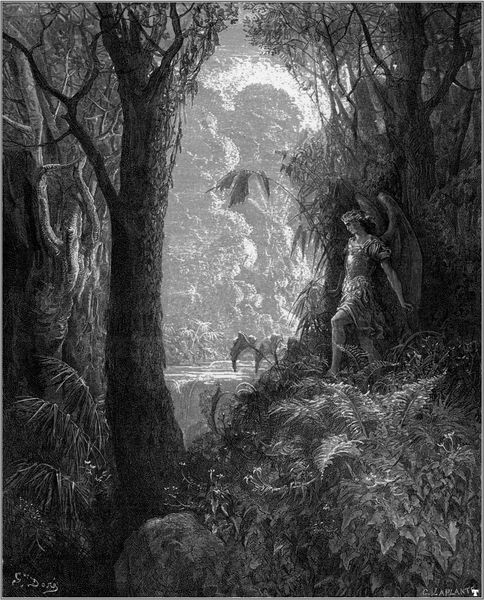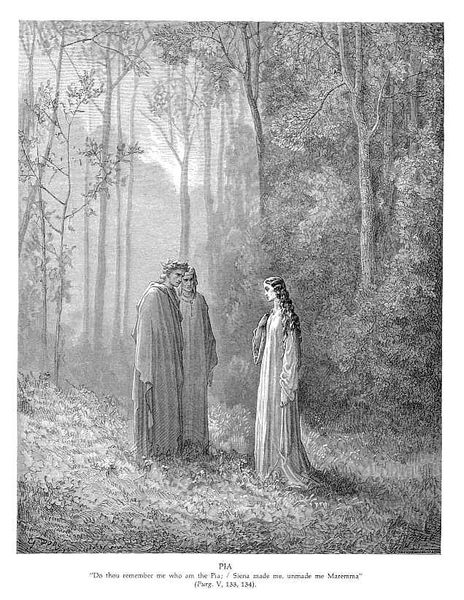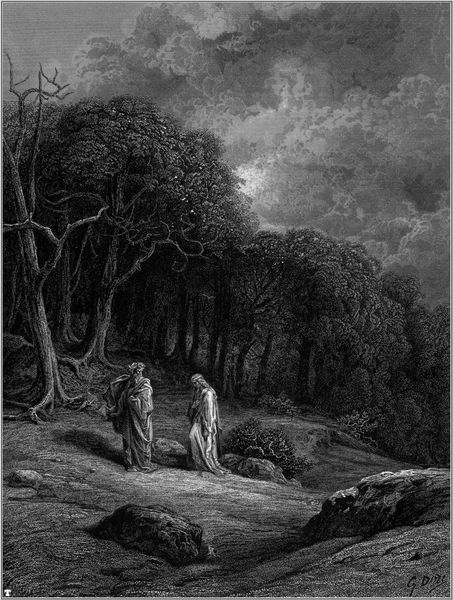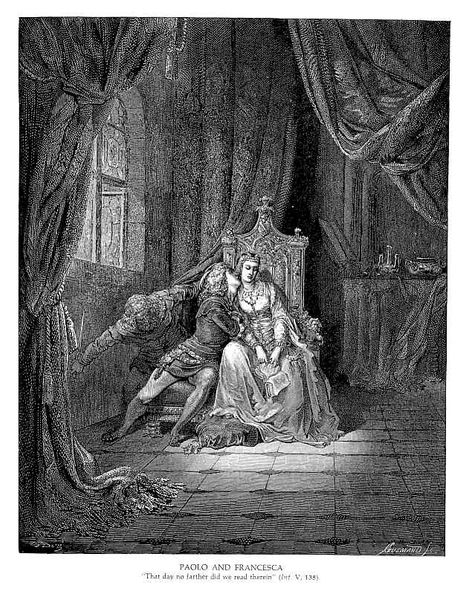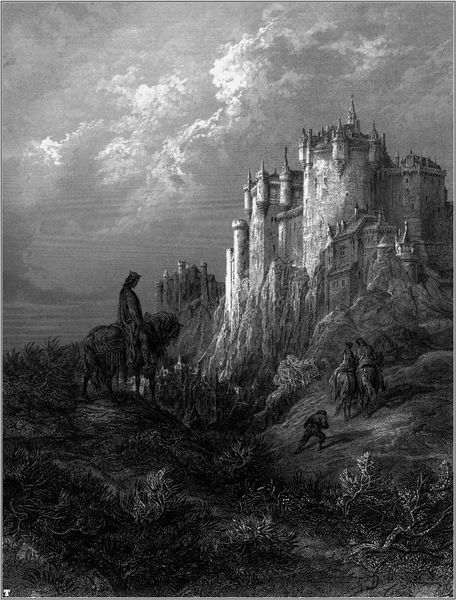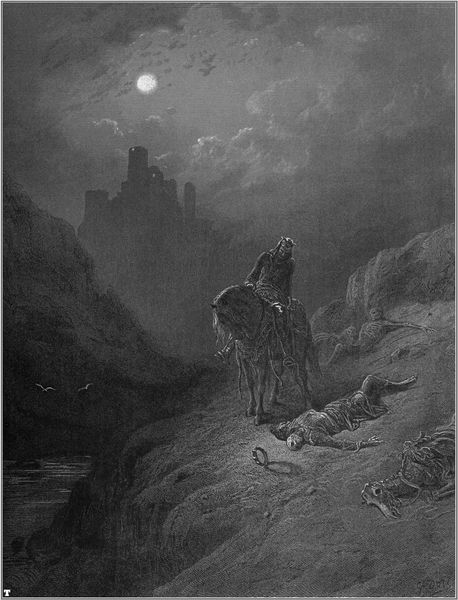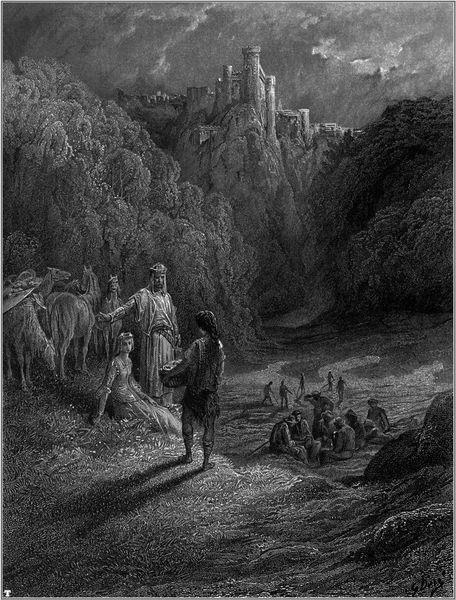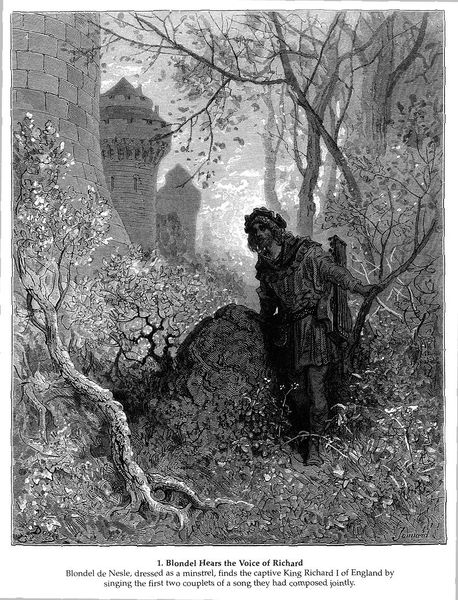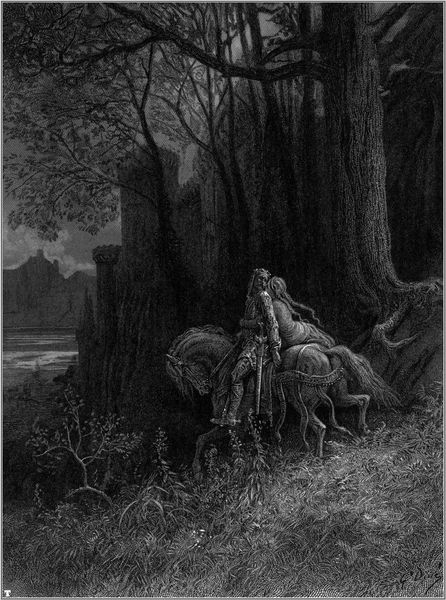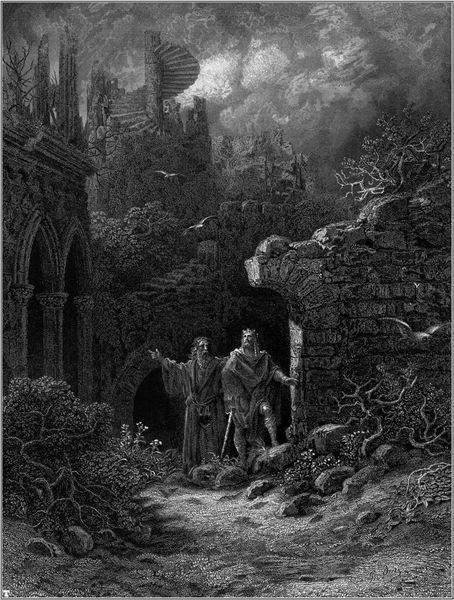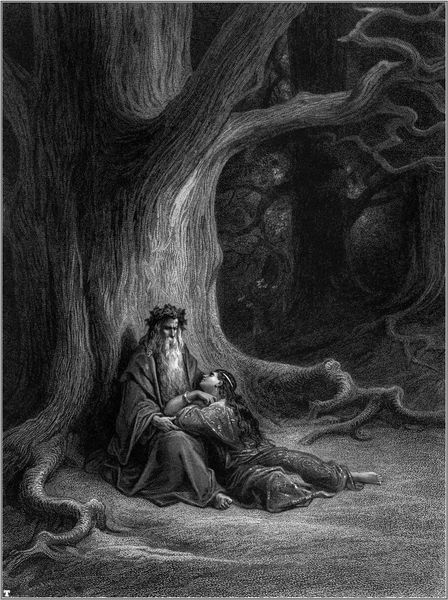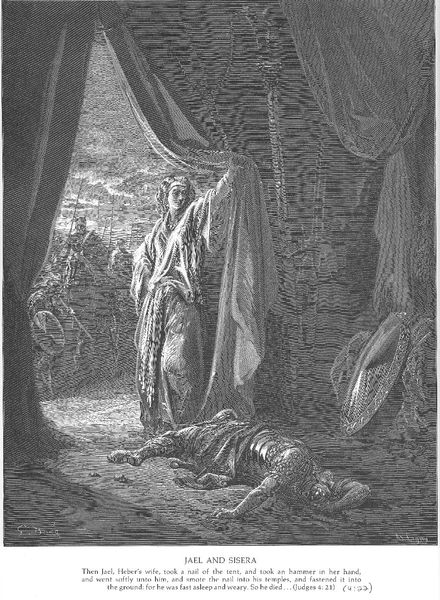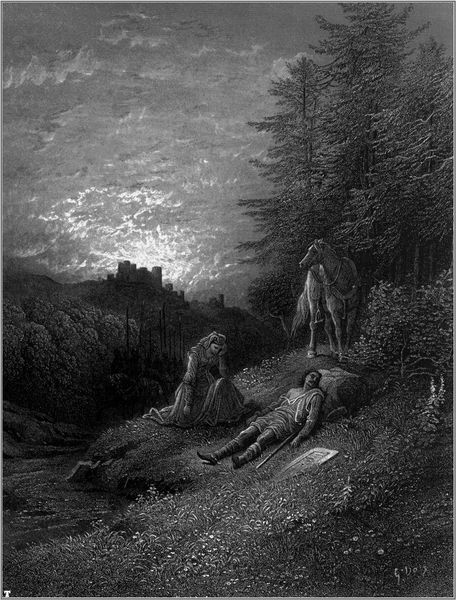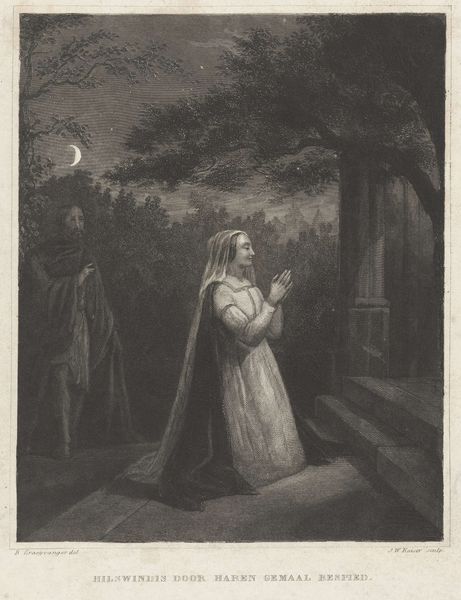
drawing, photography, engraving
#
drawing
#
narrative-art
#
black and white photography
#
landscape
#
black and white format
#
charcoal drawing
#
figuration
#
charcoal art
#
photography
#
romanticism
#
black and white
#
monochrome photography
#
history-painting
#
monochrome
#
engraving
Copyright: Public domain
Curator: Here we have an engraving called "Idylls of the King" by Gustave Doré. It illustrates Tennyson's Arthurian epic. What is your first take on it? Editor: The overwhelming sense is melancholy. There's a definite Gothic darkness in the shadows, especially around the castle lurking in the background. Curator: Definitely. Doré was masterful at creating atmosphere through light and shadow. Look at how he uses hatching and cross-hatching to define forms, and how that contrasts with the figures in the foreground. The forest, though beautiful, also conveys a sense of confinement, even premonition. Editor: It’s interesting to think about this work within the context of Victorian England. Tennyson's "Idylls" were a reimagining of Arthurian legends. Doré, with his penchant for dramatic compositions, intensifies that longing for a perhaps overly-idealized past. Is that not what Victorian art sought in some ways? Curator: Precisely. The Middle Ages became this repository of moral values. It's also significant how Doré uses specific motifs. For instance, the characters' garb isn't just arbitrary; it's referencing a visual lexicon familiar to viewers of his time, triggering associations with particular narratives, social roles and archetypes. The woman’s veil hides and reveals. Editor: Yes! We are also reckoning with issues of gender. Consider the power dynamics hinted at by these two female figures, perhaps a mother and daughter or mistress and maid. Who is holding whose hand and why? Does it intimate agency, submission, or dependence? This gets especially tricky when read alongside Arthurian romances and quests…and what do they demand from the women involved. Curator: Good point. It adds layers to how we understand these enduring myths and symbols. Looking at this piece then encourages critical dialogue between past and present, doesn’t it? Editor: Exactly. By analyzing the symbols and imagery, and understanding what they once conveyed, we reveal our changing values and beliefs. It's powerful to see those evolving standards visually mapped out over time. Curator: It provides a cultural bridge. Well, it's a complex piece but one that richly rewards repeated engagement. Editor: Absolutely. I find myself drawn to its subtle intricacies and nuanced perspectives on those grand tales. It really does linger in the mind.
Comments
No comments
Be the first to comment and join the conversation on the ultimate creative platform.
